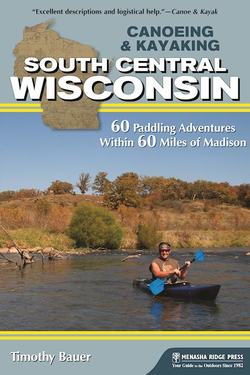Читать книгу Canoeing & Kayaking South Central Wisconsin - Timothy Bauer - Страница 21
На сайте Литреса книга снята с продажи.
Planning for a Safe Trip Preparing for Rapids and Obstructions (and Wind)
ОглавлениеKeep the following in mind: An empty boat stays afloat, even in rapids; it’s when humans get involved that all bets are off. As in most situations that trigger adrenaline, when paddling it’s in your best interest to always stay calm while remaining mindful of your environment. Adapting to the changing dynamics of the current as well as to “suddenly appearing” boulders or tree branches is critical to keeping safe and dry.
Rapids (explained in more detail in the discussion earlier in this introduction regarding water type) are exhilarating but can pose certain dangers, not the least of which are the unexpected objects in water that change its flow. In a certain sense, and for the purposes of the paddling environments you’ll find in this book, paddling in rapids is all about the Vs—from upstream, an obstruction in water creates two angles of deflected current that resemble the letter V. Think of these as signals that you’re coming to a possible barrier to avoid. By contrast, your best friend is the inverted V. That’s usually where there is the most water and the least chance of collision. Think of it as an arrow pointing you in the right direction for billowy fun.
Obstacles are a big part of paddling, so it’s important to consider how they can affect your trip. Sometimes, a strong current can broach (pin) the boat sideways against an obstacle such as a downed tree, which can damage the boat and trap the paddler. If this happens, always lean toward the object the boat is pressed against, never toward the current. When leaning into the obstruction, one can reasonably free oneself by scooting/rocking back and forth or by getting out of the boat and pulling it over the obstruction. (By contrast, if you lean into the current, it will immediately fill up your boat, spin you upside down, and drag the boat beneath the obstruction. This can be extremely dangerous.)
Because there are potential dangers to any paddling excursion, take time to practice the techniques (such as forward and reverse strokes, sweeps and low braces) that enable you to easily maneuver your canoe or kayak. This will help you learn how to maximize your efficiency and not waste energy. Practice your rescue skills as well; this is imperative. Learning how to safely roll or reenter your kayak from the water should you submerge is paramount (see below).
A note about wind: When you’re on the water, especially in flat environments with sparse trees that are highly susceptible to vast sweeps of wind, wind can mean the difference between a pleasant, tranquil outing and a teeth-clenched workout. Windy days usually diminish wildlife sightings as well. When planning for a trip in environments where wind is a factor, I’ve tried to remind you to check the wind forecast early in “The Flavor.”
For further general safety information, Appendix F: Safety Code of American Whitewater.
